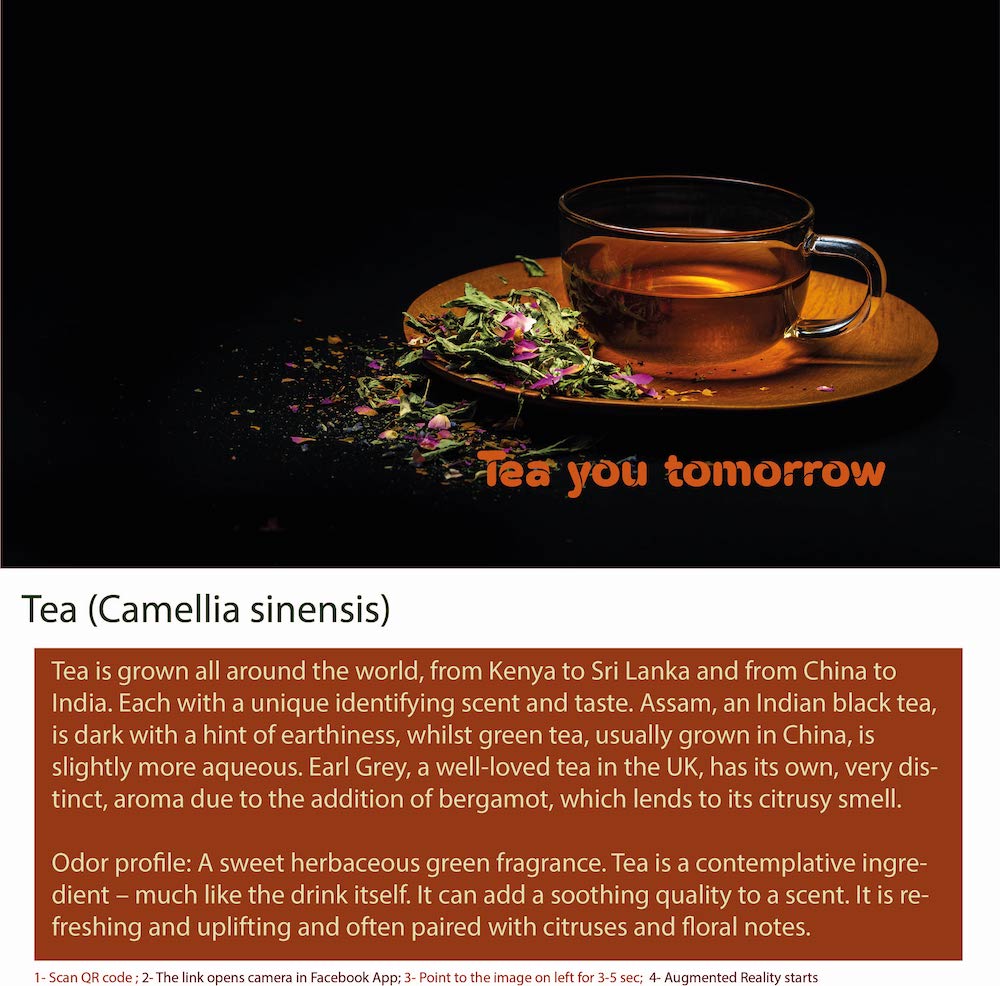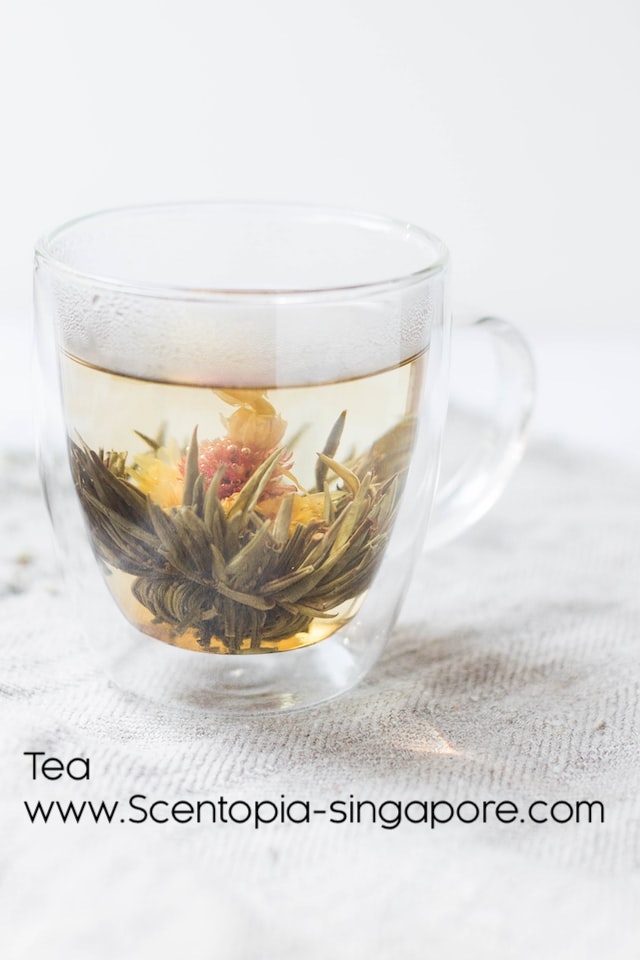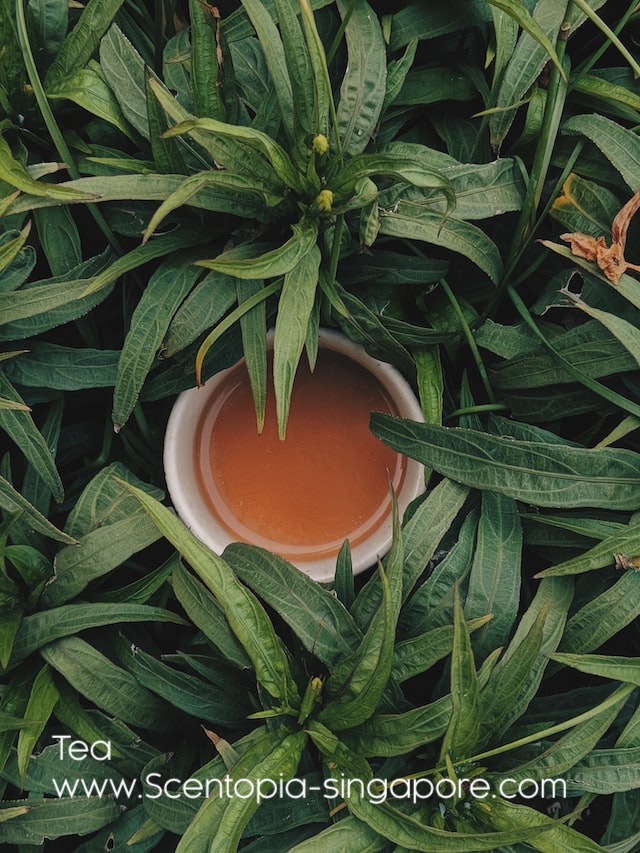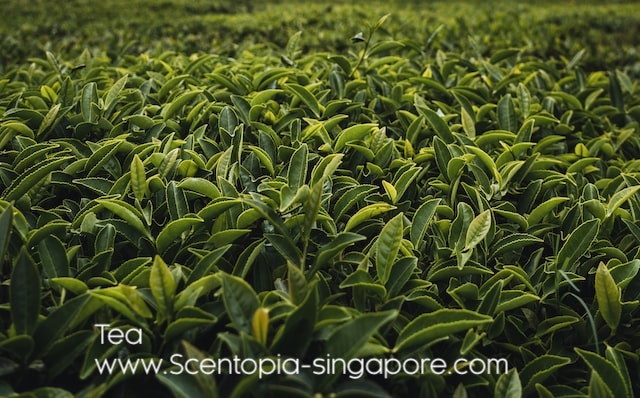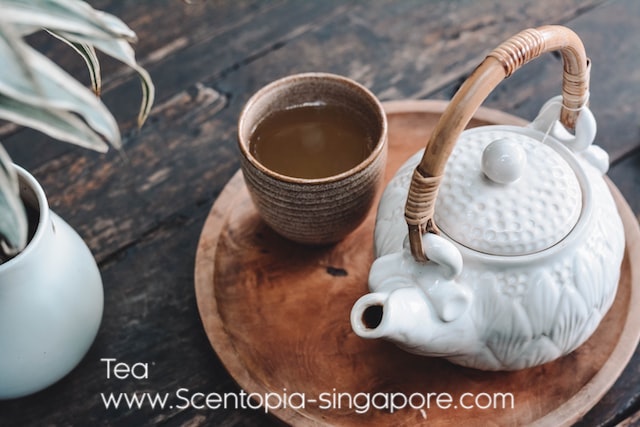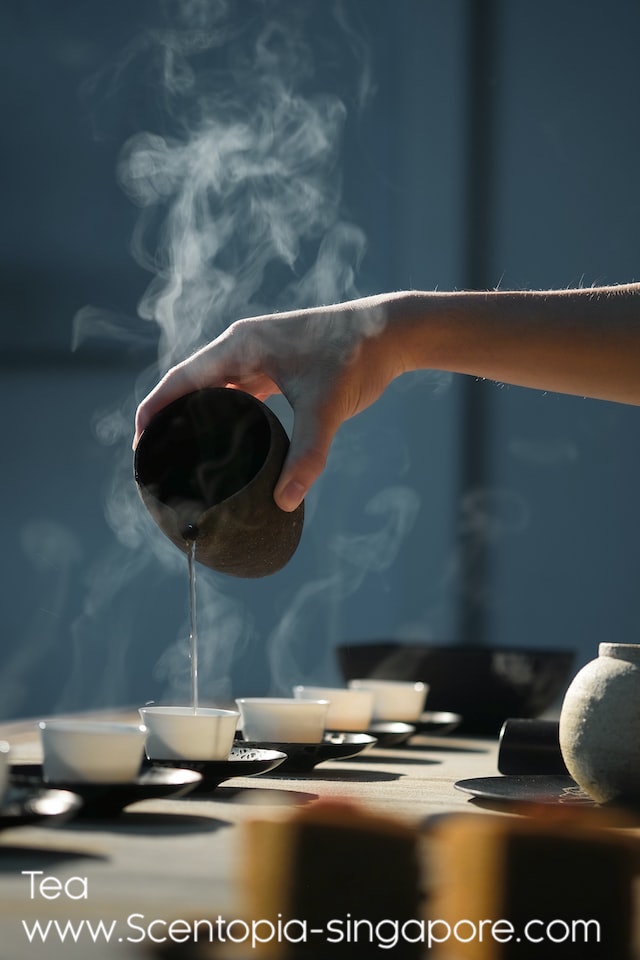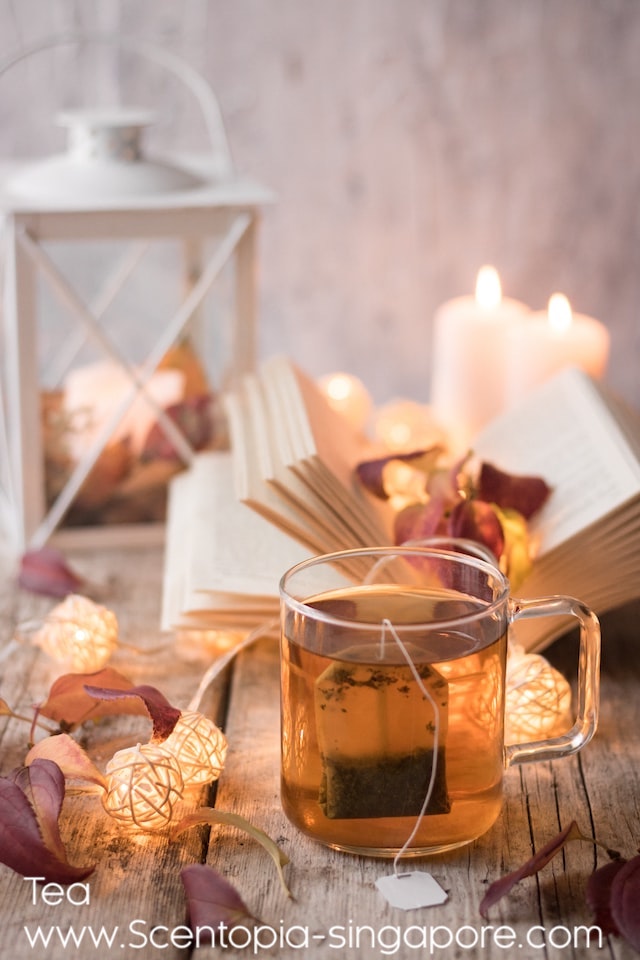Unveiling the Tea Perfume Recipe
Tea: The Elixir of Aromas, Health, and Cultural Significance
Introduction: Tea, with its aromatic allure and potential health benefits, is a cherished beverage celebrated for its presence in perfumes, therapeutic oils, culinary delights, and traditional medicine. Tea is an infusion made from the leaves of the Camellia sinensis plant, and its consumption has been an integral part of various cultures for thousands of years. From inspiring perfumers with its delicate fragrance to offering potential wellness properties, tea is more than just a beverage. This essay delves into the captivating world of tea, encompassing its presence in perfumes, therapeutic oils, food, medicinal systems, historical significance, and intriguing fun facts about this extraordinary and cherished elixir.
The Aromas of Tea: Tea is renowned for its diverse range of aromas, which vary depending on the type and processing method. From the delicate floral notes of white tea to the earthy richness of pu-erh tea, each variety offers a unique and captivating fragrance.
Perfumes and Fragrance: Tea's delicate and soothing fragrance has inspired perfumers to create scents that capture the essence of this delightful beverage. Tea-inspired perfumes often evoke feelings of tranquility, sophistication, and elegance, making them popular choices for those seeking a touch of aromatic allure.
Therapeutic Oils and Aromatherapy: Tea essential oils, such as green tea essential oil, are used in aromatherapy for their potential benefits. Their aromas are believed to promote relaxation, reduce stress, and uplift the mood.
Culinary Delights: Tea leaves are not only brewed into a beverage but are also used as flavoring agents in various culinary creations. They are used in marinades, desserts, and even savory dishes to infuse their delightful aromas and subtle flavors.
Medicinal Applications: Tea, particularly green tea and black tea, has been associated with potential health benefits. It is believed to have antioxidant properties and may support heart health and cognitive function.
Historical Significance: Tea has a rich history that dates back to ancient China, where it was used as a medicinal drink before evolving into a popular beverage enjoyed for its taste and social significance. Tea drinking spread to other parts of the world through trade and cultural exchange.
Fun and Crazy Facts:
Tea, with its aromatic allure and potential wellness benefits, is a cherished and versatile elixir that continues to captivate and inspire with its diverse range of fragrances and flavors. From its presence in perfumes to its culinary and medicinal uses, tea offers a wealth of enjoyment and potential health benefits. As we savor the delicate aromas and rich history of tea and explore its cultural significance and fascinating facts, we are reminded of the enduring appeal and timeless charm of this extraordinary beverage that has enriched our social gatherings, health routines, and aromatic experiences for generations.
Introduction: Tea, with its aromatic allure and potential health benefits, is a cherished beverage celebrated for its presence in perfumes, therapeutic oils, culinary delights, and traditional medicine. Tea is an infusion made from the leaves of the Camellia sinensis plant, and its consumption has been an integral part of various cultures for thousands of years. From inspiring perfumers with its delicate fragrance to offering potential wellness properties, tea is more than just a beverage. This essay delves into the captivating world of tea, encompassing its presence in perfumes, therapeutic oils, food, medicinal systems, historical significance, and intriguing fun facts about this extraordinary and cherished elixir.
The Aromas of Tea: Tea is renowned for its diverse range of aromas, which vary depending on the type and processing method. From the delicate floral notes of white tea to the earthy richness of pu-erh tea, each variety offers a unique and captivating fragrance.
Perfumes and Fragrance: Tea's delicate and soothing fragrance has inspired perfumers to create scents that capture the essence of this delightful beverage. Tea-inspired perfumes often evoke feelings of tranquility, sophistication, and elegance, making them popular choices for those seeking a touch of aromatic allure.
Therapeutic Oils and Aromatherapy: Tea essential oils, such as green tea essential oil, are used in aromatherapy for their potential benefits. Their aromas are believed to promote relaxation, reduce stress, and uplift the mood.
Culinary Delights: Tea leaves are not only brewed into a beverage but are also used as flavoring agents in various culinary creations. They are used in marinades, desserts, and even savory dishes to infuse their delightful aromas and subtle flavors.
Medicinal Applications: Tea, particularly green tea and black tea, has been associated with potential health benefits. It is believed to have antioxidant properties and may support heart health and cognitive function.
Historical Significance: Tea has a rich history that dates back to ancient China, where it was used as a medicinal drink before evolving into a popular beverage enjoyed for its taste and social significance. Tea drinking spread to other parts of the world through trade and cultural exchange.
Fun and Crazy Facts:
- Tea Classification: The six main types of tea are white tea, green tea, yellow tea, oolong tea, black tea, and dark tea (pu-erh).
- Tea Legends: According to a popular Chinese legend, tea was discovered accidentally by Emperor Shen Nong when tea leaves fell into his pot of boiling water, giving birth to the first cup of tea.
- Tea and Traditions: Various cultures have unique tea traditions, such as the Japanese tea ceremony and the British afternoon tea.
- Tea in Perfumery: Tea notes are commonly used in perfumery to add freshness, subtlety, and a sense of calmness to fragrances.
- World's Most Expensive Tea: The Da Hong Pao tea, a rare Chinese oolong tea, is one of the most expensive teas in the world, with prices reaching thousands of dollars per ounce.
Tea, with its aromatic allure and potential wellness benefits, is a cherished and versatile elixir that continues to captivate and inspire with its diverse range of fragrances and flavors. From its presence in perfumes to its culinary and medicinal uses, tea offers a wealth of enjoyment and potential health benefits. As we savor the delicate aromas and rich history of tea and explore its cultural significance and fascinating facts, we are reminded of the enduring appeal and timeless charm of this extraordinary beverage that has enriched our social gatherings, health routines, and aromatic experiences for generations.
To experience augmented reality, please open the Facebook-app using QR code and point to the image below
Crafting Fragrances Inspired by Sentosa
Tea is a widely consumed beverage made by steeping the leaves of the Camellia sinensis plant in hot water. It is the second most consumed drink in the world after water, and has a rich cultural and historical significance in many countries. Some popular varieties of tea include black tea, green tea, oolong tea, and white tea. Tea has been used for its medicinal properties and is a source of antioxidants and other beneficial compounds.
Tea has a long and rich history, originating in China thousands of years ago. It was first used for medicinal purposes, but eventually became a staple drink for the Chinese imperial court. Tea spread to Japan and other parts of Asia, and eventually made its way to Europe and the Americas, where it became widely popular. The British East India Company played a significant role in popularizing tea in Europe, and tea remains a staple beverage worldwide to this day.
Tea has a long and rich history, originating in China thousands of years ago. It was first used for medicinal purposes, but eventually became a staple drink for the Chinese imperial court. Tea spread to Japan and other parts of Asia, and eventually made its way to Europe and the Americas, where it became widely popular. The British East India Company played a significant role in popularizing tea in Europe, and tea remains a staple beverage worldwide to this day.
Gathering the Finest Tea Aromatics
The history of tea dates back to ancient China where it was used as a medicinal drink. Tea later spread to Japan and Europe through trade and colonization in the 17th century. In the 19th century, the British East India Company established tea plantations in India, which became a major producer of tea. Tea has since become a global drink, consumed in many cultures and used in many rituals, such as tea ceremonies in Japan.
There are several types of tea:
There are several types of tea:
- Black tea
- Green tea
- Oolong tea
- White tea
- Herbal tea
- Pu-erh tea
- Yellow tea
- Dark tea
Blending Tea Notes with Floral Scents
Tea has a long and rich history in many cultures and literatures around the world. In China, tea is considered to have been first consumed around 2737 BC, and since then it has played a major role in Chinese culture, with tea drinking being a social and ceremonial activity. In Britain, tea drinking was popularized in the 17th century, and eventually became a staple part of British culture, with the tea trade playing a significant role in the colonization of India. In Japan, tea is a central part of the tea ceremony, which is steeped in tradition and cultural significance. In the Western world, tea has been a popular drink for centuries and is often associated with comfort and relaxation. Tea has also played a role in literature, with tea parties and tea-drinking scenes appearing in works by authors such as Jane Austen, Lewis Carroll, and Katherine Mansfield.
Some of the most expensive teas in the world include:
Some of the most expensive teas in the world include:
- Tie Guan Yin (Iron Goddess)
- Da Hong Pao (Big Red Robe)
- Longjing (Dragonwell)
- Pu-erh tea
- Yellow tea
- Gyokuro (Jade Dew)
- Matcha tea
- Wuyi Yancha (Rock tea)
- Bai Hao Yinzhen (Silver Needle)
- Bi Luo Chun (Green Snail Spring)
Creating Personalized Tea Perfumes
Here are some fun tea-related facts:
- Tea was discovered by a Chinese Emperor in 2737 BC when a tea leaf fell into his cup of boiling water.
- The first tea bags were invented by an American tea merchant in the early 1900s.
- The UK is the largest per capita consumer of tea in the world.
- India is the largest producer of tea in the world, accounting for almost 30% of global production.
- The most expensive tea in the world is a type of tea called Tie Guan Yin, which can cost up to $3,000 per kilogram.
- In Japan, tea ceremonies play an important role in cultural and spiritual life, and are considered an art form.
- Iced tea was first introduced at the 1904 World's Fair in St. Louis, Missouri.
Exploring Sentosa's Aromatic Landscapes
The scent profile of tea varies depending on the type and preparation of tea. Generally, tea has a fresh, slightly bitter aroma. Black tea has a strong, robust scent, while green tea has a grassy, vegetal fragrance. Herbal teas, like chamomile or mint, have their own unique scent profiles. The scent of tea can also be affected by the addition of milk, sugar, lemon, or other ingredients.
The primary chemical compound contributing to the scent profile of tea is 2,3-butanedione, also known as diacetyl, which imparts a grassy, floral and buttery aroma. Other volatile organic compounds, such as esters, aldehydes and alcohols, contribute to the overall scent profile of tea and vary depending on the type and processing method.
The primary chemical compound contributing to the scent profile of tea is 2,3-butanedione, also known as diacetyl, which imparts a grassy, floral and buttery aroma. Other volatile organic compounds, such as esters, aldehydes and alcohols, contribute to the overall scent profile of tea and vary depending on the type and processing method.
Expert Perfumers Share Their Insights
Tea notes are used in perfumes to add a fresh and invigorating scent, which can be achieved by using various tea extracts or oils, such as green tea, black tea, white tea, oolong tea, etc. Tea scents are typically light, crisp, and clean, and they can be combined with other notes, such as floral, fruity, or spicy notes, to create complex fragrance compositions.
There are countless perfumes with various tea notes. However, here are some popular ones:
There are countless perfumes with various tea notes. However, here are some popular ones:
- Jo Malone Earl Grey & Cucumber
- Thierry Mugler Angel
- Bvlgari Omnia Green Jade
- Yves Saint Laurent Elle
- Acqua di Parma Colonia Intensa Oud
- Prada Infusion d'Iris
- Dior J'adore
- Gucci Bloom
- Tom Ford Noir Pour Femme
- Chloé Love Story.
Join Scentopia, Sentosa's latest tourist attraction wonderful orchid scent crafting, fragrance tour, bridal shower or corporate team building which includes perfume making onsite and offsite, beach activities and more. We also serve primary school learning journey, secondary students and pupil on industrial excursions. Know more about our orchids perfume bar or therapeutic orchid scents and other wellness aromas. Conatct Perfume workshop or book a scent crafting session here.

